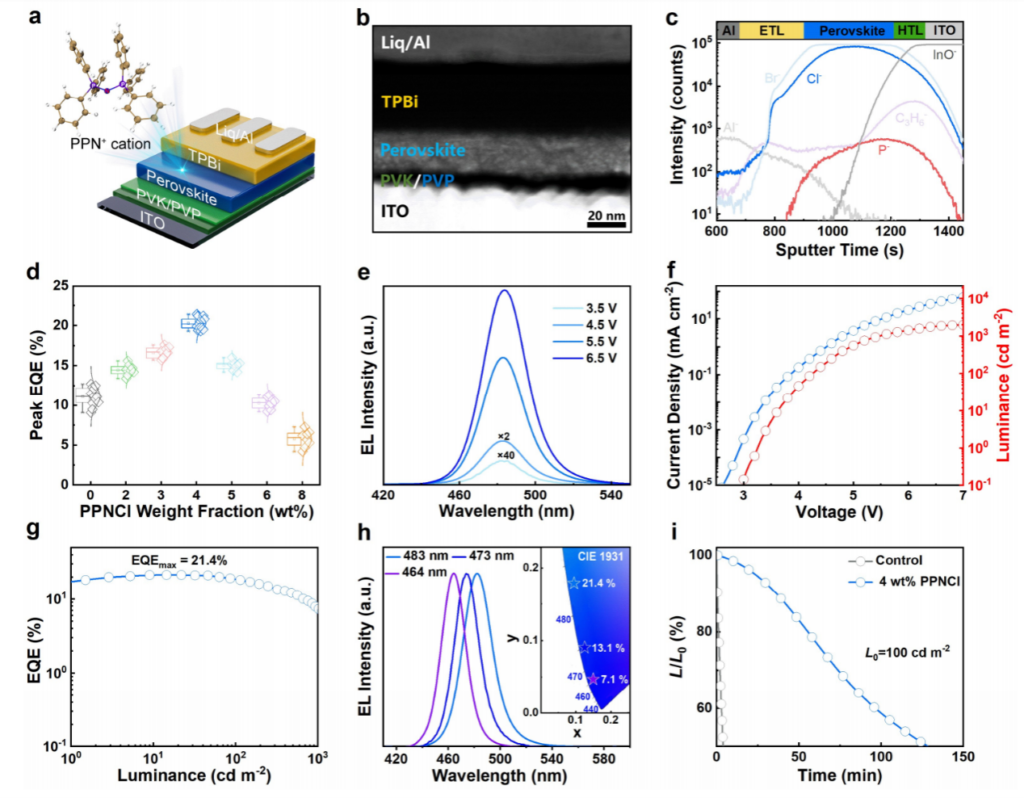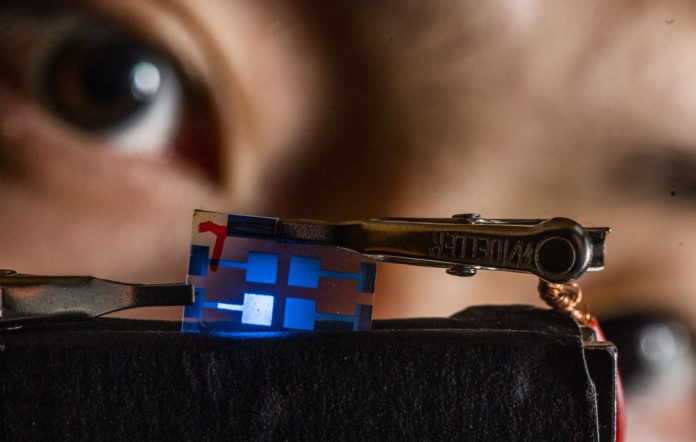Cui Linsong’s research team from the University of Science and Technology of China (USTC), in collaboration with Prof. Samuel D. Stranks’ team from the University of Cambridge, have developed a new strategy to improve the performance of blue light-emitting diodes (LEDs) that are based on perovskite materials. Their findings have been published in Nature Photonics.
Perovskite LEDs are a promising next-generation technology for lighting and displays due to their superior luminescent properties and cost-effectiveness. Green, red, and near-infrared perovskite LEDs have made significant progress. However, the development of blue perovskite LEDs has lagged behind, posing a major bottleneck in the field.
The research team designed a multifunctional ionic additive, PPNCl, to address this challenge. PPNCl has multiple charged resonance forms and a dynamic electronic state. This compound enables precise control over the composition and distribution of perovskite phases. As a result, it effectively suppresses non-radiative recombination channels and ion migration, significantly improving the efficiency and stability of blue perovskite LEDs.

PPNCl interacts with the components of the perovskite through hydrogen bonding. This interaction influences the crystallization process and promotes the transition to high-dimensional phases, which enhances luminescence efficiency.
Transient absorption (TA) spectroscopy studies also show that PPNCl speeds up energy transfer processes from low-dimensional to high-dimensional phases, reducing incomplete energy transfer and energy loss caused by non-radiative recombination in low-dimensional phases.
PPNCl molecules coordinate with perovskite components and passivate defects in perovskite films, inhibiting halide ion migration. This leads to a significant enhancement in the luminescence efficiency and spectral stability of perovskite films.
High-efficiency and stable blue perovskite LEDs have been achieved thanks to the effective control exerted by PPNCl over perovskite phase distribution, defect states, and ion migration. The devices have an external quantum efficiency (EQE) of 21.4% with an emission peak at 483 nm, making them the most efficient blue perovskite LEDs to date. Furthermore, the devices have been made almost 30 times more stable.
This breakthrough sets the stage for further improvements in blue perovskite LED performance, representing significant progress in perovskite LED technology.



